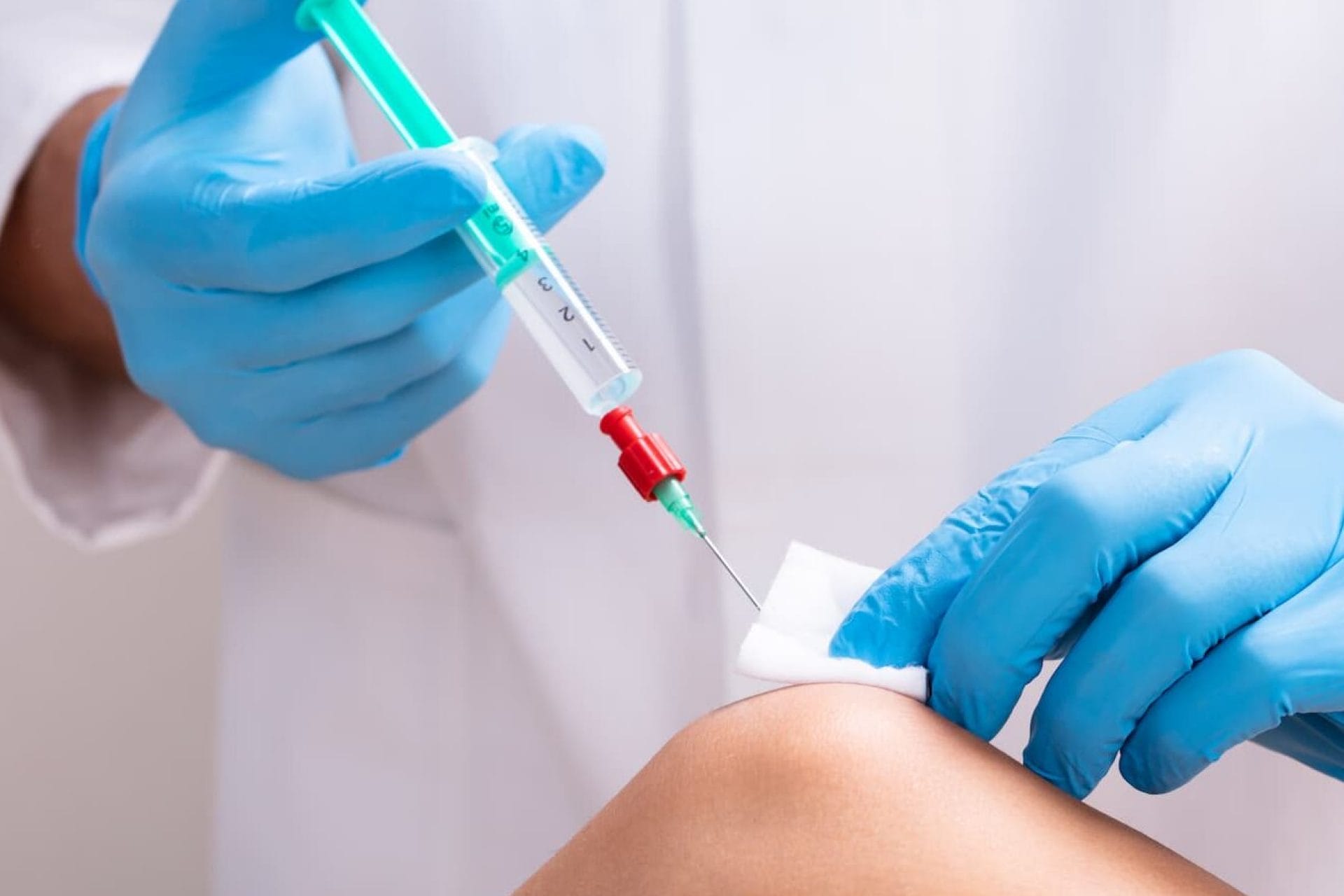What are hyaluronic acid injections?
Hyaluronic acid injections can relieve pain and improve knee function, for patients who suffer from knee osteoarthritis or other common knee problems.
Hyaluronic acid injections have been shown to have the following beneficial effects on joints:
- They replace some of the normal ingredients found in synovial fluid (hyaluronans) improving the lubricating ability.
- They help to stimulate the joint lining (the synovium) manufacture more normal synovial fluid.
- The hyaluronan coats the lining of the damaged joint surfaces, covering pain nerve endings. This reduces pain and protects the joint surfaces from joint inflammation.
- Hyaluronans also act directly to reduce inflammation in a joint, like a steroid, but without the harmful side-effects of steroids.

Which conditions do hyaluronic acid injections treat?
Hyaluronic acid injections into the knee joint are a very effective tool to treat:
- Patients with localised damage to the lining surface of the joint (localised chondral defect).
- Patients with early stage arthritis who wish to decrease their pain and increase their function.
- Patients with more advanced arthritis who would like to postpone the need for a total joint replacement.
- Athletes involved in impact sports (running, jumping , twisting) that overload the articular cartilage of the knee. There is some evidence that this can lead to increased breakdown of the lining articular cartilage. This could be one of the mechanisms pre-disposing to the accelerated development of osteoarthritis in athletes at a younger age. Hyaluronic acid injections are used to treat athletes with early arthritis of the knee. Whether hyaluronic acid injections have any effect to reduce damage to the articular cartilage that is repeatedly overloaded (as in running jumping sports) is as yet unknown, but may be possible.
What are the risks involved with Hyaluronic acid injections?
Mr Jari who will give you the injection will have checked your medical history to ensure that you are at minimal risk of any adverse reaction. Ostenil is a very pure product which is made by a process called fermentation. It contains no animal proteins (unlike some other hyaluronans available) which means adverse reactions are extremely unusual with Ostenil injections, but if you notice any of the following symptoms: swelling, redness or warmth around the injection site, or you feel generally unwell, please contact your GP, casualty or Mr Jari.
It is important that you attend your review appointment so that Mr Jari can assess the effects of the injection and provide you with additional advice as appropriate.Less common effects of ACL reconstruction include bleeding, infection, stiffness of the knee which requires revision surgery, and deep vein thrombosis. The risk of these occurrences is considered very low.
Viscosupplementation treatment for knee osteoarthritis
The use of viscosupplementation is based on observation that there is a decrease in viscosity and elasticity of the synovial fluid in osteoarthritis and that the native hyaluronic acid in osteoarthritic knees has a lower molecular weight than that found in normal healthy knees. Replenishing the hyaluronic acid component of normal synovial fluid may play a role in supplementing the elastic and viscous properties of synovial fluid, which may help relieve the signs and symptoms related to osteoarthritis and improve function.
Hyaluronic acid is a glycosaminoglycan that is composed of glucuronic acid and N-acetylglucosamine. It differs from other glycosaminoglycans in that it is unsulfated; also, it does not bind covalently with proteins to form proteoglycan monomers, serving instead as the backbone of proteoglycan aggregates. It is the only glycosaminoglycan that is not limited to animal tissues, being found also in bacteria. It serves as a lubricant and shock absorber in the synovial fluid, and is found in the vitreous humor of the eye. Hyaluronic acid is not well absorbed orally, but has been widely used intraarticularly in the treatment of osteoarthritis in animals and, more recently, in humans. Hyaluronic acid is well tolerated with no demonstrable toxicity and few side effects. Because it is injected directly into the joint, its onset of action is rapid. Conversely, its route of administration does limit its therapeutic applications to some degree, and high cost is also a factor.
Make An Enquiry
Or contact us directly
[email protected]
0161 445 4988
